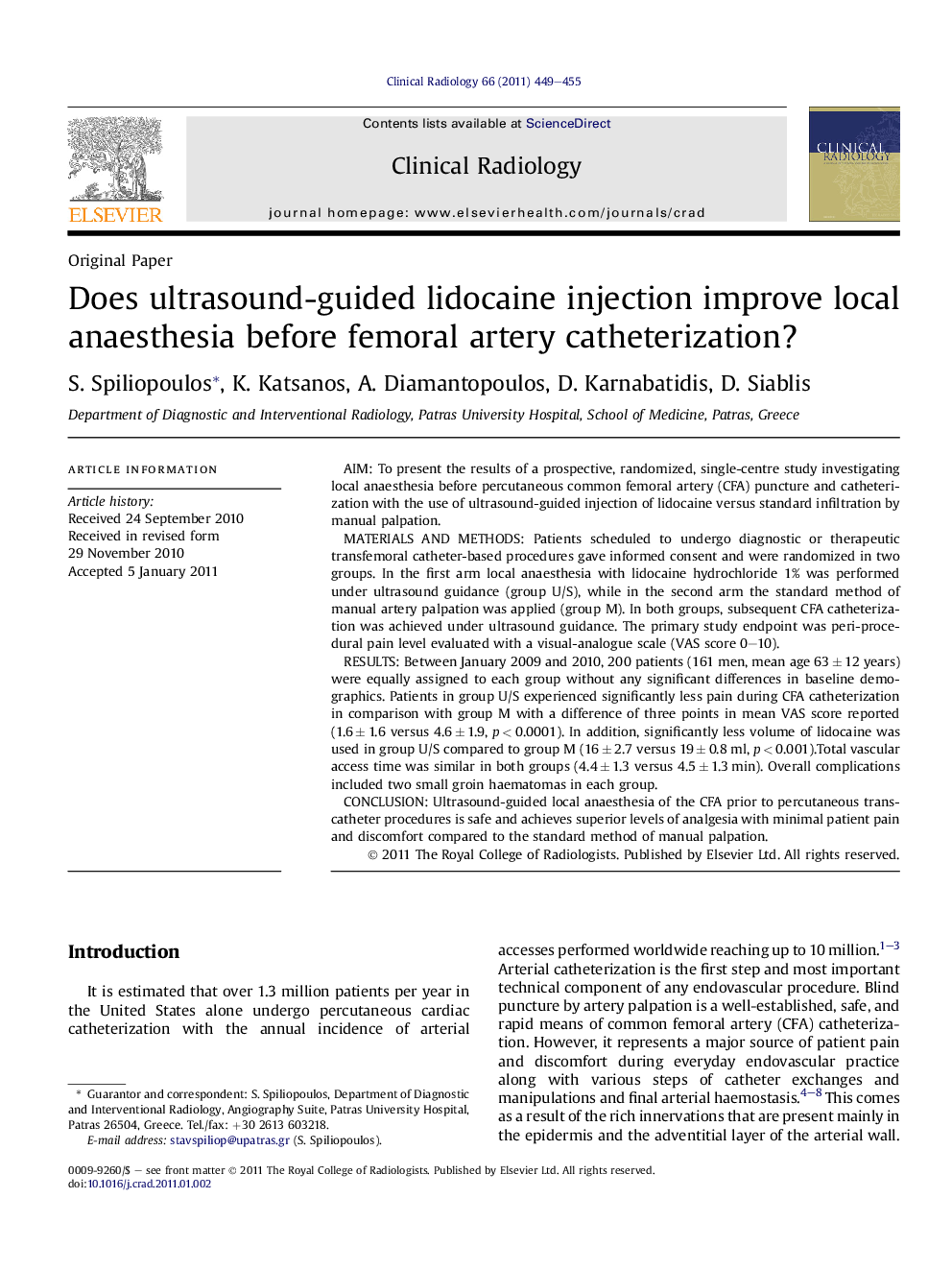| Article ID | Journal | Published Year | Pages | File Type |
|---|---|---|---|---|
| 3982076 | Clinical Radiology | 2011 | 7 Pages |
AimTo present the results of a prospective, randomized, single-centre study investigating local anaesthesia before percutaneous common femoral artery (CFA) puncture and catheterization with the use of ultrasound-guided injection of lidocaine versus standard infiltration by manual palpation.Materials and methodsPatients scheduled to undergo diagnostic or therapeutic transfemoral catheter-based procedures gave informed consent and were randomized in two groups. In the first arm local anaesthesia with lidocaine hydrochloride 1% was performed under ultrasound guidance (group U/S), while in the second arm the standard method of manual artery palpation was applied (group M). In both groups, subsequent CFA catheterization was achieved under ultrasound guidance. The primary study endpoint was peri-procedural pain level evaluated with a visual-analogue scale (VAS score 0–10).ResultsBetween January 2009 and 2010, 200 patients (161 men, mean age 63 ± 12 years) were equally assigned to each group without any significant differences in baseline demographics. Patients in group U/S experienced significantly less pain during CFA catheterization in comparison with group M with a difference of three points in mean VAS score reported (1.6 ± 1.6 versus 4.6 ± 1.9, p < 0.0001). In addition, significantly less volume of lidocaine was used in group U/S compared to group M (16 ± 2.7 versus 19 ± 0.8 ml, p < 0.001).Total vascular access time was similar in both groups (4.4 ± 1.3 versus 4.5 ± 1.3 min). Overall complications included two small groin haematomas in each group.ConclusionUltrasound-guided local anaesthesia of the CFA prior to percutaneous transcatheter procedures is safe and achieves superior levels of analgesia with minimal patient pain and discomfort compared to the standard method of manual palpation.
